
TRAVELING THE ROAD FROM LOSS AND GRIEF TO A NEW BEGINNING
Everyone experiences loss and deals with grief in their own way but it’s important that through it all, we keep focused on a fresh start in a new light. The road to a new beginning after losing someone so important is not an easy one and is something I have experienced personally in my life.
In 2009 my environment changed from comfort and confidence to one of loss and insecurities. In the beginning, as I began to process my grief, I experienced moments of defeat and began to realize that the loss was permanent.
I looked to different methods to move forward by making small changes and a few large ones to add distraction to each day, however the emotional pain could not be disguised. Although each passing day was difficult in those early years of loss, each passing year did bring a new hope. As I reflected on my journey I began to see that I wasn’t moving forward. I was stuck in a place waiting for something to change, unable to move forward.
Trying new things felt like a step in the right direction. I became a yoga instructor, took a deep look at my relationships, and changed my career path. But I was still waiting.
It wasn’t until I read the book “Second Firsts” by Christina Rasmussen, that I began to strengthen my resolve and firmly commit to becoming a different person. She states in her book “You decide to put one foot in front of the other, make one choice at a time, and slowly… re-enter the world. Re-emerge into your own life. Not as the same person you were before. As a different person. Stronger. More compassionate. More resilient that you ever dreamed possible.”
Until now, I was not ready. I had struggled to find answers during my journey after loss but today things were different. This was a concept I could grasp and it was also the right time emotionally for me to really move forward and begin anew. It has been an 11 year journey thus far and I have emerged and truly know who I am. My experience with loss and the transition to living again brought me to where I am today, New Beginnings, Helping People Move Forward.
Each person has their own journey to new life and it may be a long one. Grief is an essential part of the process and while extremely difficult, you can get through it. Take it one moment at a time and look for support from friends, family, and formal groups. Make changes that move you toward your new, true self.
Please reach out to me if you need help moving forward.


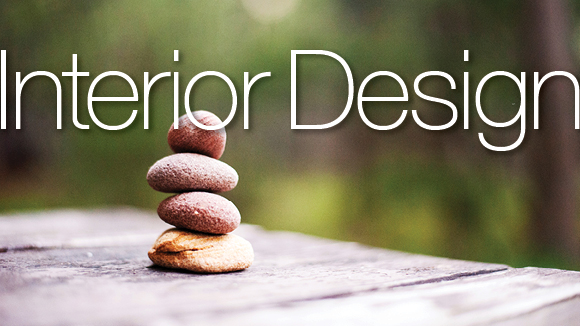

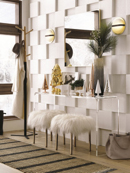 Consider which zones will have the greatest impact. Start with the most visible areas of your home to accentuate your theme. Depending on your house, perfect zones to decorate might be:
Consider which zones will have the greatest impact. Start with the most visible areas of your home to accentuate your theme. Depending on your house, perfect zones to decorate might be:
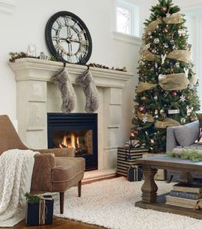
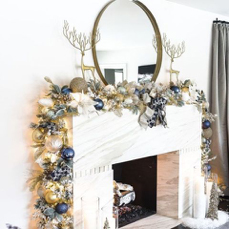 Start with a white background to appreciate every detail. Bring it to the table by using linen tablecloths and napkins. Set your space aglow! Choose candles and tapers in soft whites, creams, and warm metallics to create a neutral, cohesive look.
People do lots of seasonal cooking and white dishes showcase the food you’re serving. Mixing all periods, shapes and materials of white—earthenware or porcelain.
Instead of festooning the space with many decorations, select a few ornaments to display in a large bowl on the table, thus paring down the sprawling detritus of holidays past to one simple, meaningful centerpiece. Minimalist decor doesn’t mean sacrificing on cozy! Layer lots of chunky knits, sheepskins and warm, textural decor to bring the snuggle factor.
Maximalist – Eccentric style, mixing colors & pattern with old and new decorations.
Play up pattern when it comes to your table setting — don’t be afraid to mix and match with seriously colorful china. Is the philosophy “more is more” kinda your thing? Have your tree be as over-the-top as you can dream up! Punch up your mirrors and walls with wreaths in bold colors, shimmering metallics, and interesting textures.
Nostalgic – Traditionalists in color and a classic style.
Big on tradition but small on space? Just add a mini tree potted in an antique brass cachepot! Spruce up your libations station with fresh cut greenery, plenty of winter citrus, and classic linen cocktail napkins. Let your antique ornament collection be the star of the show!
Make sure to put the bubbly on ice. Fill antique champagne buckets with everything from booze to festive branches to ornaments! Take your sips outdoors with vintage enamelware mugs & wrap yourself in plaid blankets.
Start with a white background to appreciate every detail. Bring it to the table by using linen tablecloths and napkins. Set your space aglow! Choose candles and tapers in soft whites, creams, and warm metallics to create a neutral, cohesive look.
People do lots of seasonal cooking and white dishes showcase the food you’re serving. Mixing all periods, shapes and materials of white—earthenware or porcelain.
Instead of festooning the space with many decorations, select a few ornaments to display in a large bowl on the table, thus paring down the sprawling detritus of holidays past to one simple, meaningful centerpiece. Minimalist decor doesn’t mean sacrificing on cozy! Layer lots of chunky knits, sheepskins and warm, textural decor to bring the snuggle factor.
Maximalist – Eccentric style, mixing colors & pattern with old and new decorations.
Play up pattern when it comes to your table setting — don’t be afraid to mix and match with seriously colorful china. Is the philosophy “more is more” kinda your thing? Have your tree be as over-the-top as you can dream up! Punch up your mirrors and walls with wreaths in bold colors, shimmering metallics, and interesting textures.
Nostalgic – Traditionalists in color and a classic style.
Big on tradition but small on space? Just add a mini tree potted in an antique brass cachepot! Spruce up your libations station with fresh cut greenery, plenty of winter citrus, and classic linen cocktail napkins. Let your antique ornament collection be the star of the show!
Make sure to put the bubbly on ice. Fill antique champagne buckets with everything from booze to festive branches to ornaments! Take your sips outdoors with vintage enamelware mugs & wrap yourself in plaid blankets.
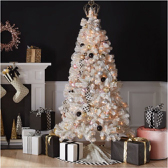 Modernist – Clean and crisp style.
Warm up sleek serving pieces with plenty of soft linens, richly hued fruits, and ceramics. Keep your overall hues moody but add a pop of lightness to the space with a sweet, Scandinavian-inspired star pendant.
This is the time to let your sleek stemware be the star of the party. Gather gorgeous vessels in varying shapes and heights on your mantel, and fill with single branches for a dramatic effect.
Turn your tree into a modernist work of art by keeping the overall palette to a few colors and choosing sculptural ornaments that can shine on their own
Modern Glamour – Art Deco in style, with plenty of brass & gold accents.
Impress your guests and make your home truly shine bright by bringing out your finest and fanciest serving pieces in shades of metallic. Embrace your wild side with animal print accents, layered in rich, sumptuous velvet and silk pillows throughout your living space.
Then sip in style with sleek crystal stemware and lucite ice buckets.
Modernist – Clean and crisp style.
Warm up sleek serving pieces with plenty of soft linens, richly hued fruits, and ceramics. Keep your overall hues moody but add a pop of lightness to the space with a sweet, Scandinavian-inspired star pendant.
This is the time to let your sleek stemware be the star of the party. Gather gorgeous vessels in varying shapes and heights on your mantel, and fill with single branches for a dramatic effect.
Turn your tree into a modernist work of art by keeping the overall palette to a few colors and choosing sculptural ornaments that can shine on their own
Modern Glamour – Art Deco in style, with plenty of brass & gold accents.
Impress your guests and make your home truly shine bright by bringing out your finest and fanciest serving pieces in shades of metallic. Embrace your wild side with animal print accents, layered in rich, sumptuous velvet and silk pillows throughout your living space.
Then sip in style with sleek crystal stemware and lucite ice buckets.
 Rustic/Industrial – This style emphasizes the use of unique materials.
Compose a cozy atmosphere with a cabin theme of flannel, distressed wood, pine boughs, and burlap. Embrace your green thumb! Understated greenery brings a clean, organic elegance to your space. Construct a Christmas tree of copper piping or pennies.
Build tree decorations using gears/hex nuts of different shapes for ornaments.
Form wreaths by hanging mason jar lids and attach ornaments inside. Fabricate wall versions of rusty hardware & springs turned into snowflakes, the rustier the better.
Rustic/Industrial – This style emphasizes the use of unique materials.
Compose a cozy atmosphere with a cabin theme of flannel, distressed wood, pine boughs, and burlap. Embrace your green thumb! Understated greenery brings a clean, organic elegance to your space. Construct a Christmas tree of copper piping or pennies.
Build tree decorations using gears/hex nuts of different shapes for ornaments.
Form wreaths by hanging mason jar lids and attach ornaments inside. Fabricate wall versions of rusty hardware & springs turned into snowflakes, the rustier the better.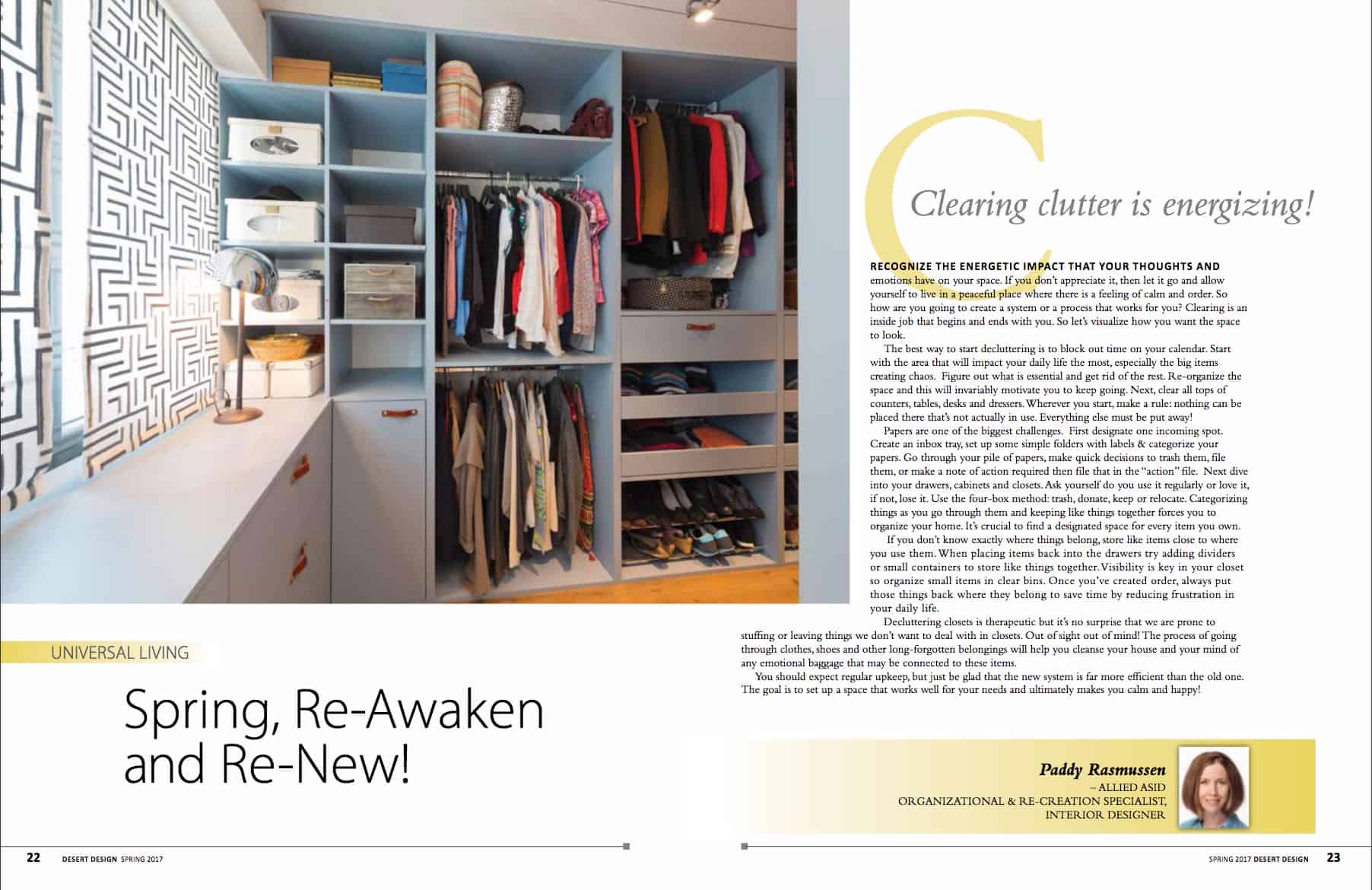

 Start from the Bottom of the Closet and Work Your Way Up. Cleaning up and clearing out the mess at the bottom of the closet will free up space in which to work. When sorting clothes and shoes, ask yourself: does it fit, is it damaged (stained, torn, faded) and has it been worn in the past year. If your answer is “No” then put it in the box to either donate or trash. If you have something that is sentimental or only wear it on special occasions, put these items in a storage bin to free up closet space. The same goes with shoes. Install another shelf at the top of your closet for storing mementoes and out of season clothing. To weed out the rest, try the “backwards hanger” trick over the course of the next year. Start the year with the hanger tips all facing the front of the closet (backwards). After you wear something, put it back in the closet with the hanger facing the back. At the end of the year, you’ll be able to easily identify the clothes that just aren’t worth keeping anymore.
Clean Up Closet Shelves
Remove everything from your closet shelves, wipe down the shelves and then get rid of anything that isn’t adding value to your life. Visibility is key, use clear storage bins for smaller items. You should be able to see everything in your closet without moving too much. If you are decluttering a closet that you don’t use to store clothing, it can be really tempting to stack, don’t do it! Consider adding more shelving above things that you may keep at the bottom, like a vacuum cleaner or storage bins. You can also add hooks inside the door for brooms, mops and dustpans.
It’s a daily journey to keep order in your home by consistently picking things up and putting them away in their place, a habit to instill over time. You should expect regular upkeep, but just be glad that the new system is far more efficient than the old one. The goal is to set up a space that works well for your needs and ultimately makes you calm and happy!
Start from the Bottom of the Closet and Work Your Way Up. Cleaning up and clearing out the mess at the bottom of the closet will free up space in which to work. When sorting clothes and shoes, ask yourself: does it fit, is it damaged (stained, torn, faded) and has it been worn in the past year. If your answer is “No” then put it in the box to either donate or trash. If you have something that is sentimental or only wear it on special occasions, put these items in a storage bin to free up closet space. The same goes with shoes. Install another shelf at the top of your closet for storing mementoes and out of season clothing. To weed out the rest, try the “backwards hanger” trick over the course of the next year. Start the year with the hanger tips all facing the front of the closet (backwards). After you wear something, put it back in the closet with the hanger facing the back. At the end of the year, you’ll be able to easily identify the clothes that just aren’t worth keeping anymore.
Clean Up Closet Shelves
Remove everything from your closet shelves, wipe down the shelves and then get rid of anything that isn’t adding value to your life. Visibility is key, use clear storage bins for smaller items. You should be able to see everything in your closet without moving too much. If you are decluttering a closet that you don’t use to store clothing, it can be really tempting to stack, don’t do it! Consider adding more shelving above things that you may keep at the bottom, like a vacuum cleaner or storage bins. You can also add hooks inside the door for brooms, mops and dustpans.
It’s a daily journey to keep order in your home by consistently picking things up and putting them away in their place, a habit to instill over time. You should expect regular upkeep, but just be glad that the new system is far more efficient than the old one. The goal is to set up a space that works well for your needs and ultimately makes you calm and happy!